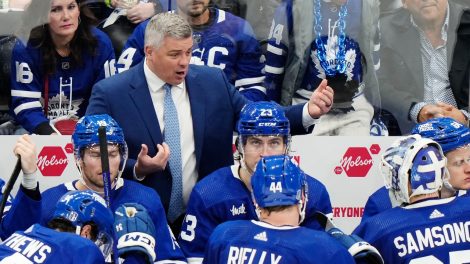In the seventh installment of our 25 Montreal Canadiens in 25 days series, we focus on defenceman Jeff Petry.
Petry combines size, agility and skill to offer a unique package from the back end. No single aspect of his game stands out above the rest; he does almost everything well.
His speed makes him a perfect fit with the Canadiens’ style and his physicality is a nice complement.
The Ann Arbor, Mich., native has been impressing ever since he came up through the USHL, where he was named both defenceman and player of the year in 2006-07.
Success at that level led to him being drafted by the Edmonton Oilers 45th overall in 2006. After spending two years in the USHL, he elected to spend the next three seasons with the CCHA’s Michigan State Spartans.
Petry’s college accolades, which included a rookie of the year nomination and two all-star honours, made him a shoe in for quick promotion to the NHL.
After appearing in just half an AHL season in 2010-11, Petry made his debut with the Oilers. He barely looked back, playing just two more games in the minors.
In time, Petry has proven an ability to log big minutes at even strength, contribute on the power play, and be an effective penalty killer. Combine his versatility with his durability (he’s missed very few games to injury in his career) and it appears the Canadiens got a bargain on his contract.
Who: Jeff Petry | No. 26 | Mid/Top-pair defenceman (right) | 6-foot-3 | 198 pounds | @PetryJ | Age: 27
Acquired: Trade (2015) for a second-pick and fourth-round pick
Contract status: Six years, $5.5M AAV (expires 2021)
2014-15 Stats: 78 GP | 7 G | 15 A | 22 P | 21:15 TOI | 47.4 CF%
Career stats: 314 GP | 20 G | 61 A | 81 P | 22:14 TOI | 47.6 CF%
The book on 2014-15:
Petry is a good example of why the plus-minus stat can’t be used to accurately gauge the value of a defenceman. After recording a minus-25 in 59 games with Edmonton, he contrasted it with a minus-1 in 31 games with the Canadiens. In Montreal, he was a part of a better team.
On an Oilers team that lacked discernible structure and relied heavily on inexperienced players, Petry’s unflattering plus/minus could be blamed on his surroundings.
Petry was far from being a problem last season in Edmonton. He had a respectable four goals and 11 assists as a top-pair defenceman and became a very attractive commodity on the trade market.
The Canadiens felt he could flourish within their structure — so much so that they were willing to give up futures to acquire him in spite of the risk of losing him to unrestricted free agency in July.
And Petry proved a terrific fit. He scored three goals and four assists in 19 regular season games with Montreal. He also stabilized the defence corps by providing a much-needed balance on the right side and he moved the puck efficiently enough to help Montreal improve its possession rating (the Canadiens out-possessed their opponents in eight of their 12 Stanley Cup playoff games after finishing the regular season in the bottom one-third of the league in corsi for percentage).
Bad luck played a heavy hand in Petry’s low post-season output; it seemed like every shot he took struck the post or the crossbar. But he ranked second among Canadiens defencemen in corsi for percentage at even strength, while playing considerably tougher minutes than top-ranked Greg Pateryn, and he tied Dale Weise with the fourth-most shots on net among his teammates (27).
Brendan Gallagher recently referred to Petry as the Canadiens’ best player in the playoffs. Whether or not the stats support his argument, the eye test certainly did.
General manager Marc Bergevin was impressed too.
Off-season updates:
Instead of testing the free agent waters, Petry signed a six-year, $33 million extension with the Canadiens on June 2.
When asked if he felt he had left money on the table, Petry replied: “It was something that never really crossed my mind. Once I started negotiating with the Canadiens, my family, my wife and I made a decision that we really strongly wanted to come back.”
2015-16 outlook:
Looking at the complete picture, it’s easy to understand why Petry is high on the Canadiens’ depth chart.
Sharing the blueline with P.K. Subban and Andrei Markov means Petry doesn’t have to be the man and that’s a big factor in why he’s been able to find comfort and excel in his role.
With the acclimation process behind him, he’s likely to thrive in his first full season in Montreal; producing 25-30 points is an attainable goal.
His presence as a regular on the power play will help him get there and offer the Canadiens more depth from the point than they’ve had in three seasons.
This season should be a banner year for Petry. The Canadiens are banking on it.










